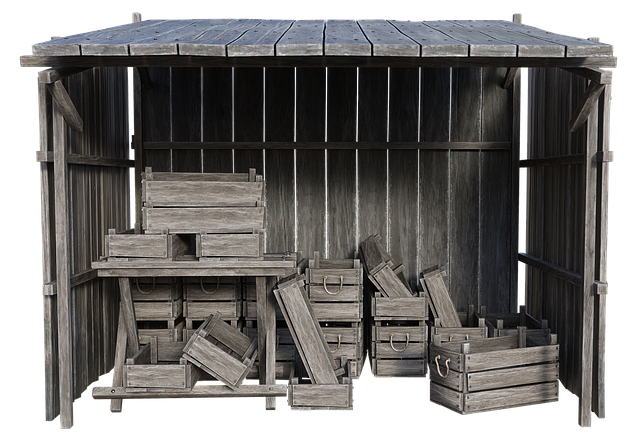If your metal barn is starting to look like a huge mess, then you have come to the right place! Here, our experts at Lion Barns will explore strategies to make the most of your barn’s storage capacity and improve its overall functionality.
Metal barns are versatile structures with the potential to store everything from tools and equipment to vehicles, livestock feed, and household goods. However, without proper organization, even the most spacious barn can quickly become cluttered and inefficient. Maximizing storage space in your metal barn requires thoughtful planning, smart storage solutions, and regular maintenance.
Let’s dive in!
Assessing Your Storage Needs
The first step in maximizing storage space in your metal barn is to carefully assess your specific needs. Start by taking inventory of all the items you plan to store. This includes everything from tools and machinery to seasonal decorations, livestock supplies, and household goods. Categorize these items into groups based on their purpose and usage. Organizing them into distinct categories, such as frequently used tools, bulky equipment, or rarely needed items, allows you to estimate the amount of space required for each category. This process also provides clarity on how best to prioritize your storage needs, ensuring nothing gets overlooked.
In addition to categorizing your belongings, consider how often you use each item. Items you rely on daily or weekly, like tools or feed supplies, should be stored in easily accessible locations. Meanwhile, less frequently used items, such as holiday decorations or off-season equipment, can be tucked away in less prominent spaces. For example, placing these items on upper shelves, in back corners, or even using overhead storage systems ensures they are out of the way but still available when needed. Thinking strategically about accessibility helps you maintain efficiency while optimizing the available space.
By understanding your storage needs thoroughly, you can develop a layout tailored to accommodate your belongings effectively. This involves deciding how much room to allocate for each category and identifying the best ways to utilize the barn’s dimensions. A well-organized barn reduces clutter, improves functionality, and ensures that every square foot is used to its full potential. This foundational step is essential to creating a space that is not only efficient but also easy to maintain over time.
Planning the Layout
A well-thought-out layout is the backbone of an efficiently organized metal barn. Start by dividing your barn into designated zones that align with the categories you’ve established during your inventory process. For example, allocate one area for tools and equipment, another for feed and livestock supplies, and a separate section for larger items such as tractors, trailers, or bulky machinery. This zoned approach ensures that similar items are grouped together, making it easier to locate and access what you need quickly. Clear divisions also help to maintain organization, as items are less likely to end up misplaced or cluttered.
Creating a detailed floor plan is a key step in implementing your layout. Sketch out where each zone will be located, taking into consideration the barn’s dimensions and your daily workflow. Plan for wide enough pathways to accommodate foot traffic or machinery, ensuring that no area is obstructed. Access points like doors and windows should also influence the placement of your zones for ease of movement and ventilation. Additionally, reserve space for temporary tasks or future storage needs to allow for flexibility. Thoughtfully planning the layout minimizes inefficiencies and optimizes the use of your barn’s available space.
Maximizing vertical storage is another essential component of an efficient layout. Wall-mounted racks, shelves, and pegboards are excellent for organizing tools and smaller equipment. Overhead storage systems, such as lofts or ceiling-mounted hooks, can accommodate seasonal items or less frequently used supplies without encroaching on valuable floor space. You can significantly expand your storage capacity while maintaining accessibility and a tidy environment. This comprehensive approach transforms your barn into a highly functional and organized storage solution.
Installing Shelving and Storage Systems
Shelving is one of the most effective ways to maximize storage space in your metal barn. Heavy-duty metal or wooden shelves can hold a variety of items, from small tools to bulky boxes. Adjustable shelving systems are particularly beneficial because they allow you to modify shelf heights to accommodate items of different sizes.
For smaller items, consider adding bins or containers that fit neatly onto the shelves. Label each bin for quick identification, and group similar items together. Clear bins are an excellent option because they allow you to see the contents without opening them.
Overhead storage systems can be used to store long or flat items, such as ladders, lumber, or pipes. These systems make use of otherwise wasted ceiling space and keep the floor clear for larger equipment.
Using Pegboards and Hooks
Pegboards are a versatile and affordable storage solution for tools and small equipment. Install pegboards on walls in your tool zone to hang hammers, wrenches, screwdrivers, and other frequently used tools. Hooks and hangers can also be added to hold larger items like hoses, extension cords, or power tools.
Organize tools by type and size to make them easy to find. Outline the shapes of tools on the pegboard as a visual guide, ensuring each item is returned to its proper place after use. This system keeps your tools readily accessible and minimizes the risk of losing them in a cluttered workspace.
Maximizing Floor Space
Floor space is often the most valuable real estate in a metal barn. To maximize it, avoid storing items directly on the ground whenever possible. Use pallets or storage platforms to elevate heavy bags of feed, fertilizer, or other bulk items. This not only protects them from moisture but also makes it easier to clean the floor.
Invest in rolling storage carts or cabinets for items that need to be moved frequently. These mobile units provide flexibility and can be easily repositioned as your storage needs evolve. For larger equipment, such as tractors or ATVs, designate specific parking areas and mark them clearly to avoid overcrowding.
Creative Storage Solutions for Small Items
Small items like nails, screws, and other hardware can easily get lost in a large space. Use storage solutions like divided bins, tackle boxes, or magnetic strips to keep these items organized. Magnetic strips are particularly useful for holding metal tools or small parts and can be mounted on walls or workbenches.
Consider using repurposed items like mason jars or old containers for storing nails, bolts, or screws. Attach the lids of the jars to the underside of a shelf to create a unique and space-saving storage solution.
Climate Control and Preservation
If you’re storing items that are sensitive to temperature or humidity, it’s essential to create a climate-controlled environment. Install insulation to regulate temperature fluctuations and prevent condensation, which can damage tools, machinery, or feed. Dehumidifiers and fans can help maintain a dry interior, while proper ventilation prevents the buildup of moisture.
Covering items like machinery or feed with tarps or fitted covers adds an extra layer of protection against dust and humidity. For long-term storage, consider using vacuum-sealed bags for textiles or documents to keep them safe from pests and moisture.
Regular Maintenance and Decluttering
Maintaining an organized metal barn requires regular upkeep. Schedule seasonal cleaning sessions to remove dust, debris, and unused items. Decluttering periodically ensures that your storage space remains functional and prevents overcrowding.
Inspect your storage systems for wear and tear. Tighten loose screws on shelves, replace damaged bins, and ensure all hooks and hangers are secure. Keeping your storage systems in good condition helps maintain their efficiency and extends their lifespan.
Enhancing Accessibility
Accessibility is a key factor in an efficient storage system. Arrange items based on their frequency of use, with daily-use tools and supplies stored at eye level or within easy reach. Rarely used items can be stored in higher or less accessible locations.
Labeling is another important aspect of accessibility. Use clear, durable labels on bins, shelves, and containers to quickly identify their contents. A well-labeled storage system saves time and minimizes frustration when searching for specific items.
Personalizing Your Storage Space
Every barn owner’s storage needs are unique, so don’t be afraid to customize your space to suit your preferences. Add a workbench for DIY projects or create a dedicated hobby zone for crafts or woodworking. Personal touches make your barn not only functional but also enjoyable to use.
Consider installing additional lighting to improve visibility, especially in darker areas of the barn. LED lights are energy-efficient and provide bright, even illumination. Proper lighting enhances safety and makes it easier to locate items, even in large spaces.
Conclusion
Maximizing storage space in your metal barn requires a combination of smart planning and efficient storage solutions. You can transform your barn into a well-organized and functional environment simply by assessing your storage needs, organizing your layout, and utilizing vertical and overhead spaces.. With these tips, your metal barn will not only meet your storage needs but also enhance your overall productivity and enjoyment of the space.

